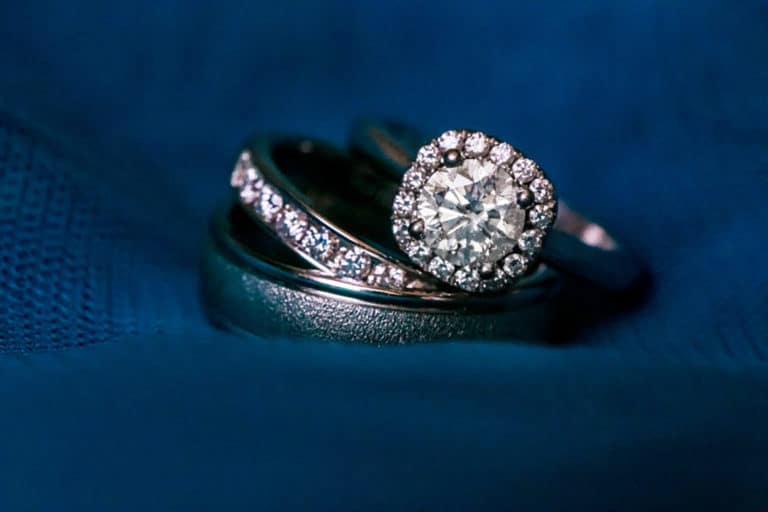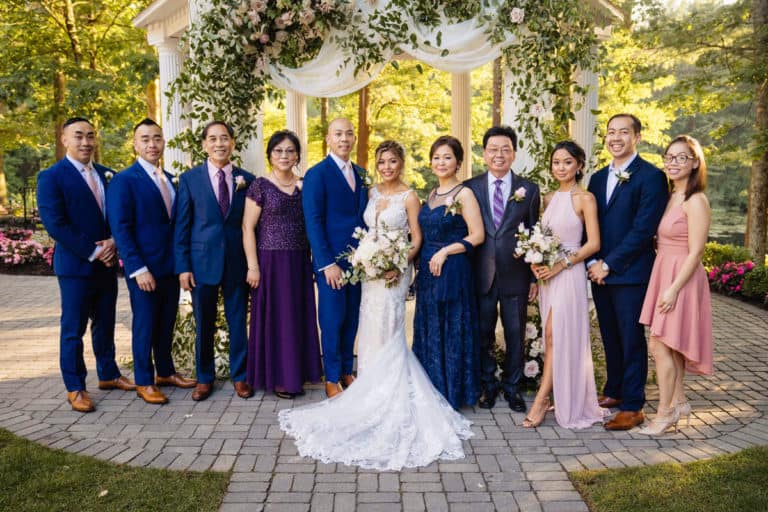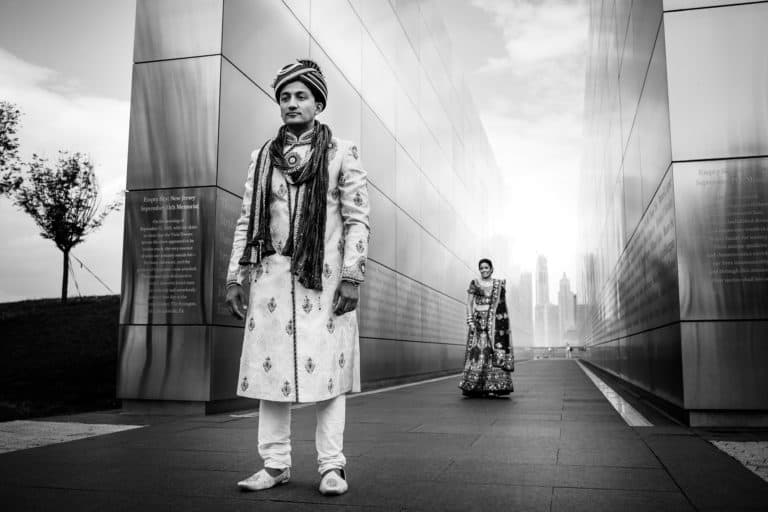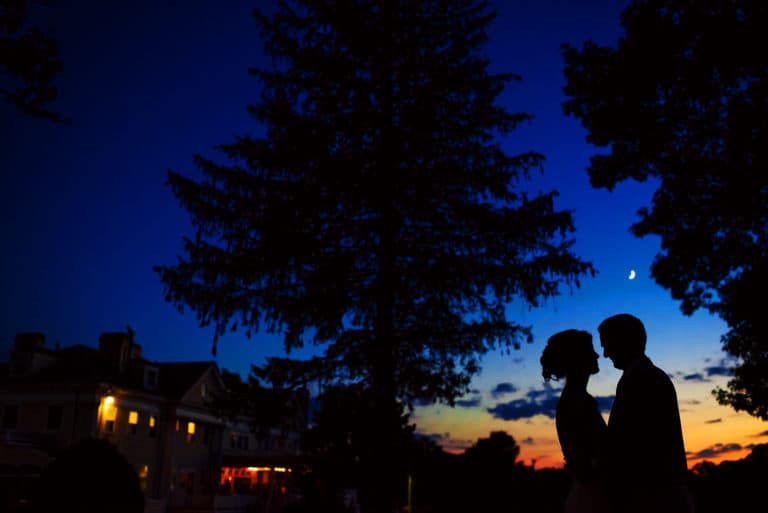When does the bride (or groom) need to be finished getting ready?
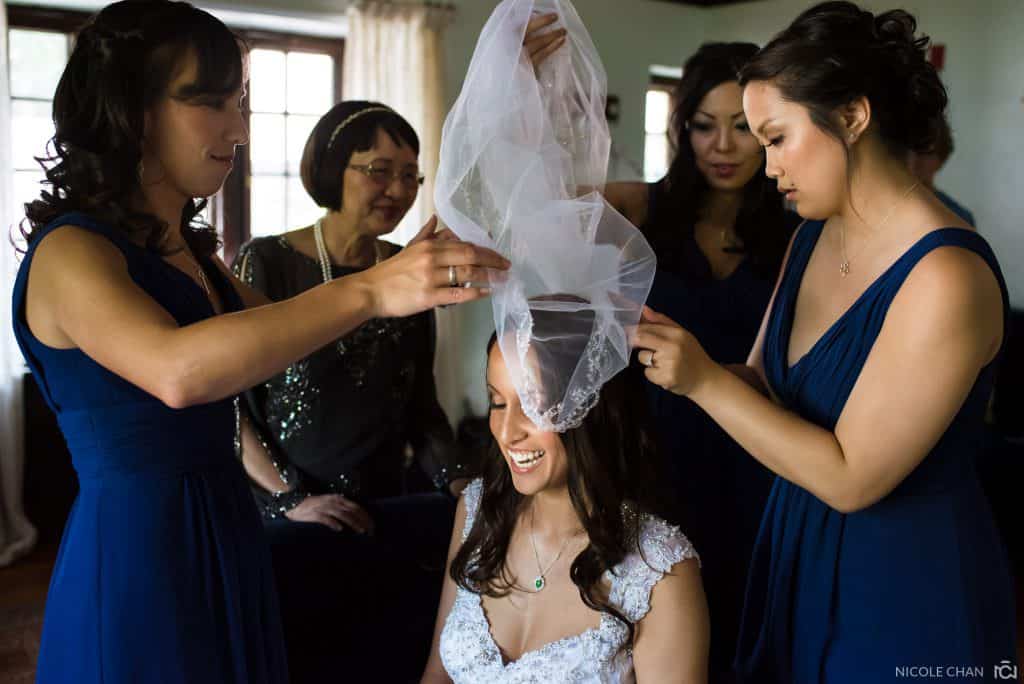
Let’s work backwards.
This example is a complex one, where the couple is getting ready in one location, having portraits taken in a second location, and the ceremony is in a third location.
The questions of how long do brides take to get ready is a multi-faceted one. One that you’ll need to discuss with your makeup artist, hair stylists, wedding party, and family. Every wedding is different.
Here’s a guide to identifying what time a bride (or groom) needs to get ready by.
Step 1: What is your wedding ceremony time?
Let’s say this is 4pm-5pm.
4:00-5:00pm Ceremony
Step 2: How long will it take to drive from your getting ready to the ceremony time?
However many minutes, add 30 minutes to that.
If it’s in the same location, still add 30 minutes.
Yes, we need this buffer.
3:00-4:00pm Travel (30m driving & 30m buffer)
4:00-5:00pm Ceremony
Step 3: First Look & Pre-Ceremony Portraits
I advise for 30 minutes with the couple, 30 minutes for wedding party, and 30 minutes for the immediate family.
Prior to that, we’ll add in travel and a smaller 15 minute buffer.
12:45-1:30pm Travel (30m driving & 15m buffer)
1:30-3:00pm First Look & Portraits
3:00-4:00pm Travel (30m driving & 30m buffer)
4:00-5:00pm Ceremony
Step 4: Add one hour BEFORE you need to leave your getting ready location
This hour is for you to grab a quick bite, go to the bathroom and brush your teeth, put on your wedding day outfit, have final makeup and hair touch-ups, and gather your belongings to leave for your pre-ceremony portraits.
One hour prior to you leaving is when you need to be finished getting ready.
11:45 *Recommended makeup and hair FINISH time. This is also my recommended photography start time (or 30-60 minutes earlier)
11:45-12:45pm Eat, pee, get dressed, pack up!
12:45-1:30pm Travel (30m driving & 15m buffer)
1:30-3:00pm First Look & Portraits
3:00-4:00pm Travel (30m driving & 30m buffer)
4:00-5:00pm Ceremony
I know the buffer time seems excessive, but I promise you that you will be happy that you have the extra time.
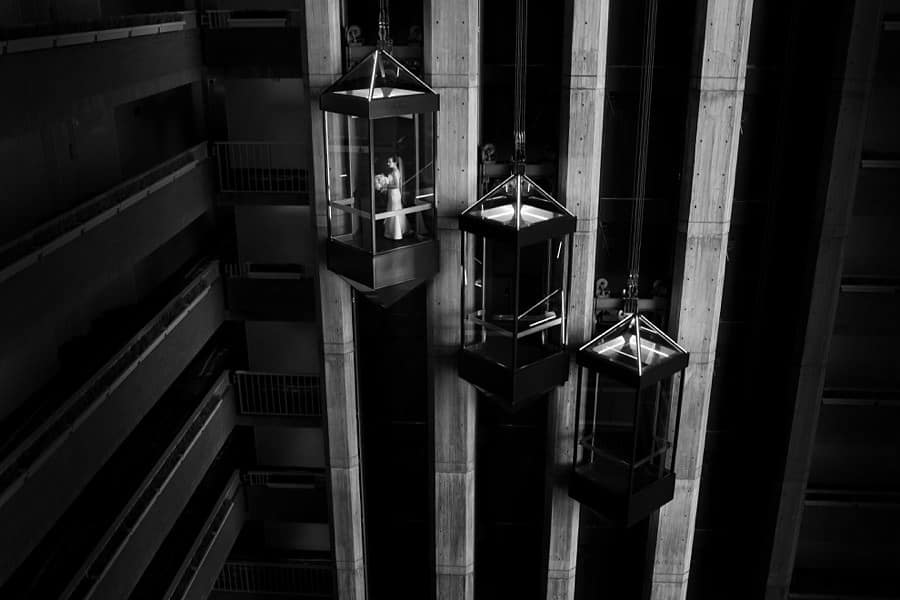
True story #1:
Several of my weddings couples have missed their entire wedding ceremony time because of Boston traffic. Their officiant was kind enough to stay for 10 minutes and perform a quick ceremony, but they skipped their personal vows and all readings. They did a hyper-fast ring exchange, and that was it.
I have a special meeting with my couples specifically designed to craft their timeline. All weddings are different, and I have special secrets and tips/tricks to all of them. It’s no secret that I’m hyper organized, Type A, and very cognizant of time. You don’t have to listen to my advice, but I will say that 99% of my couples who do, have on-time wedding days and report that they did not feel stressed for time.
True story #2:
One time, we were an hour late to getting to the First Look because the Maid of Honor was missing. I found her in the elevator, passed out in her own vomit. Because of the buffer time, we were able to still capture all portraits AND be on time for the wedding ceremony.
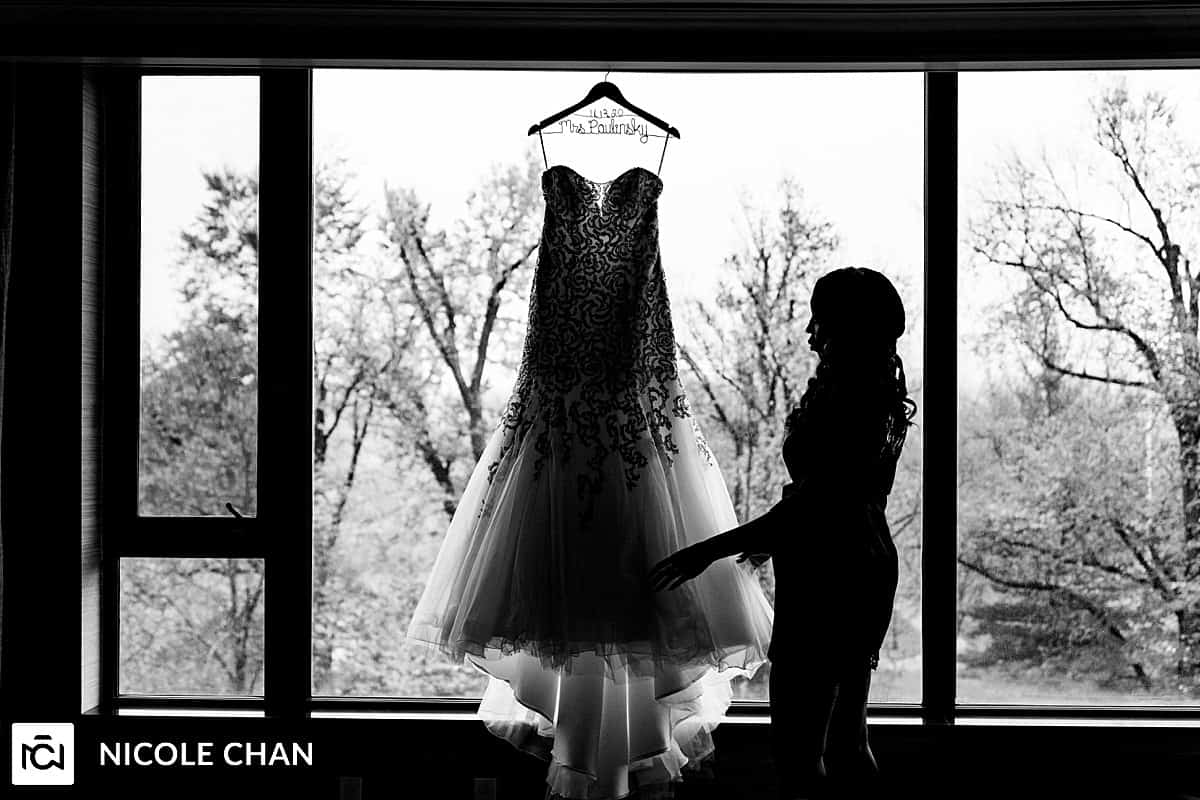
Frequently asked questions about wedding timelines
But Nicole, everything is in one place! Do we still need this buffer time?
Remove the transportation time (obviously), but as a general rule, still buffer in the 30 minutes prior to the ceremony so that no one sees you coming back, and still keep 15 minutes because time just disappears on wedding days!
But Nicole, this means I need to have everyone get ready so much earlier.
Yes, yes it does.
How long does it take for makeup and hair?
I would consult with your hair and makeup professionals. Tell them what time you need to be completed by, and let them create a timeline for you based on what they are comfortable with. I highly advise having trials (multiple, if necessary) so that your artists will know exactly what you want prior to your wedding day.
But Nicole, I have a very simple dress, and I don’t think that much buffer time will be needed.
It is your wedding day, and I want you to plan what will make you happy.
I am only here to guide you and share my previous experiences.
*whispers* but please add in a little buffer time.
I promise you that the day will speed by faster than ever thought imaginable.
Having buffer time not only reduces stress, but it’ll also elongate the day so that you can stop, absorb the moments, and really cherish it all.
It’s cheesy, I know, but it’s true. I promise.
